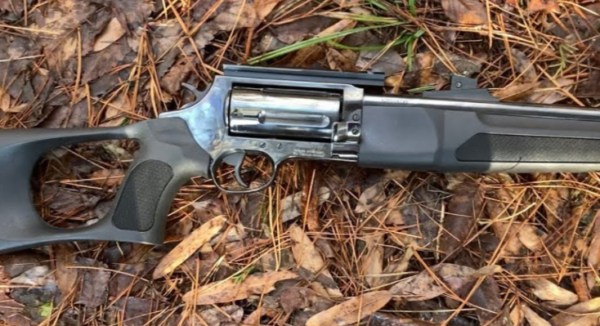
Remington 572 Problems
The Remington 572 is generally a reliable firearm, but like any object with moving parts, it can encounter several issues. Some users have reported difficulty in cycling rounds, primarily due to wear and tear on its action spring.
Another common issue is jamming, often attributed to poor maintenance or using incorrect ammunition.
Regular cleaning, proper storing and using the right type of bullets can minimize these problems.
Failure to Feed


Cause
The primary cause for the “failure to feed” issue in Remington 572 rifles is often linked to the magazine follower or the action spring.
The magazine follower can sometimes get stuck or fail to properly guide the next round into the action.
In other cases, the action spring may be too weak to fully cycle the action, preventing the next round from being fed into the chamber.
Key Points:
The magazine follower and action spring play crucial roles in feeding the rounds.
The malfunctioning of these parts can lead to a failure to feed.
Solution
To remedy this problem, the first step is to disassemble and clean the rifle thoroughly, paying special attention to the magazine follower and action spring.
If cleaning doesn’t resolve the issue, you might need to replace the problematic parts.
Always ensure to use high-quality, manufacturer-approved parts for replacements. Regular maintenance is also key in preventing such issues.
Key Points:
Detailed cleaning can sometimes resolve the issue.
Replacement of faulty parts is often necessary for a permanent solution.
Regular maintenance of the rifle can prevent future feeding issues.
Jamming Issues
Cause
Jamming issues often occur due to improper loading of materials or use of substandard materials.
Overstuffing the machine or using materials not specified by the manufacturer can trigger these issues.
Using inappropriate materials can strain the machine, leading to jams.
Moreover, lack of routine maintenance, such as cleaning or oiling, can result in accumulation of debris, causing further jamming.
Solution
Addressing jamming issues primarily involves careful operation and regular maintenance.
Always refer to the manufacturer’s instructions for suitable materials and load limits.
Routine cleaning and oiling of machine parts can significantly reduce the risk of jams.
Besides, ensuring proper alignment of components enhances machine efficiency, further mitigating the occurrence of jamming issues.
Trigger Malfunctions
Cause
Trigger malfunctions in firearms typically arise from an accumulation of dirt, grime, or rust in the trigger mechanism.
Other common causes include excessive wear of internal parts or improper assembly.
The buildup of dirt or grime can restrict the movement of the trigger, leading to it failing to release the hammer or striker.
Rust can cause permanent damage, making trigger movement rough or completely stopping it.
Worn parts or improper assembly can lead to unpredictable trigger behavior which can be extremely dangerous.
Solution
The primary solution to trigger malfunctions is regular and thorough cleaning of the firearm.
This includes cleaning the trigger assembly and lubricating moving parts to prevent dirt buildup and rust.
Periodic inspection and replacement of worn parts are also necessary to maintain the proper functioning of the trigger.
In the case of improper assembly, it is recommended to seek professional help to disassemble and correctly reassemble the trigger mechanism.
Regular maintenance and proper handling are key to preventing trigger malfunctions.
Ejection Difficulties
Cause
The main causes of ejection problems often lie in the physical properties of the material, the design of the mold, or the ejection mechanism itself.
Incorrect material selection can lead to sticking or deformation, while poorly designed molds may disrupt ejection pathways.
Mechanical failures in the ejection system can also hinder the process.
Solution
Addressing ejection difficulties begins by identifying problematic areas.
Material adjustments, such as selecting more suitable compositions or altering processing temperatures, can alleviate issues.
Redesigning the mold to ensure smoother ejection paths and sufficient ejection force can prevent sticking and deformation.
Finally, routine maintenance and inspection of ejection mechanisms can preempt mechanical failures.
Problems with Accuracy
Cause
The primary cause of accuracy problems often lies in the quality of the data used. If we are using incorrect or inadequate data, the likelihood of errors and inaccuracies rises significantly.
Data quality should always be a top priority; ensuring that we have the correct and most up-to-date information is essential.
Solution
One way to combat accuracy issues is by implementing a robust data validation system.
This could involve cross-referencing your data with other reliable sources or using algorithms to check for inconsistencies.
Prompt detection of anomalies and errors can greatly reduce inaccuracies and improve the overall reliability of the data.
Bolt Assembly Misalignment
Cause
Bolt assembly misalignment typically arises from improper installation or the usage of incompatible parts.
When the bolts are not aligned correctly, it can lead to undue stress on the assembly, potentially causing premature wear or even structural failure.
Misaligned bolts disrupt the uniform distribution of load, potentially leading to catastrophic failure.
Solution
The solution to bolt assembly misalignment involves careful installation and the use of compatible, high-quality parts.
Ensure the assembly is aligned correctly during installation, double-checking all alignments and tolerances.
Regular maintenance and inspection can help detect and correct minor misalignments before they escalate into a major issue.
Using the correct tools and following the manufacturer’s instructions can significantly reduce the risk of bolt assembly misalignment.
Shell Latch Issues
Cause
Shell latch issues in firearms typically arise due to improper maintenance or manufacturing defects.
Excessive grime, dirt, or rust can lead to the shell latch not properly securing the shell, causing malfunction during the firing sequence.
Alternatively, the latch may have been improperly manufactured or fitted, causing it to not align correctly with the shell.
Solution
The solution for shell latch issues is regular cleaning and professional inspection.
Regularly cleaning the firearm, particularly the shell latch, can help avoid the buildup of grime or rust that may affect its functionality.
However, if the issue persists despite regular maintenance, it’s advisable to have the firearm inspected by a professional.
They can assess whether the shell latch is incorrectly fitted or manufactured and can provide a solution accordingly.
Hammer Spring Failures
Causes of Hammer Spring Failures
Hammer spring failures stem predominantly from two sources: overuse and poor maintenance.
Overuse can lead to premature wear and tear, causing the spring to snap or lose its elasticity.
Poor maintenance, on the other hand, involves failure to regularly clean and lubricate the spring, leading to corrosion or accumulation of dirt that can affect spring function.
Solutions to Hammer Spring Failures
Regular inspection and adequate maintenance are paramount to preventing hammer spring failures.
Regular review can help identify signs of wear or corrosion early, allowing for timely replacement.
Adequate maintenance, including proper cleaning and lubrication, prevents the accumulation of dirt and shields the spring against moisture that can cause corrosion.
Consider using high-quality, corrosion-resistant springs for prolonged service life.
Barrel Leakage
Cause
Barrel leakage may occur due to a multitude of factors. The most common one is improper sealing during the barrel construction process.
This results from insufficient cooperation skills or the use of substandard materials. Another frequent cause is fluctuations in temperature and humidity.
These can cause the wood to contract and expand, leading to gaps through which liquid can leak.
Solution
The primary solution for barrel leakage is to ensure proper sealing during the barrel construction stage.
This means using high-quality materials and employing skilled coopers for the task. Additionally, maintaining stable storage conditions can help prevent leakage.
This involves monitoring temperature and humidity levels to minimize fluctuations and keeping barrels in a controlled environment as much as possible.
Stock Damage
Cause
Stock damage can occur due to a multitude of reasons, including improper handling, poor storage conditions, and inefficient inventory management.
Inaccurate stacking and overstocking often lead to product damage, compromising the quality and value of goods.
Inadequate training of the warehouse staff could also contribute to such mishaps.
Solution
An effective solution to mitigate stock damage involves implementing a robust inventory management system and providing comprehensive training to staff members.
Regular audits and adherence to safety protocols can go a long way in minimizing such incidents.
Furthermore, the use of modern technology, such as automated handling equipment, can significantly reduce human error and thus, the potential for damage.
Conclusion
Stock damage, a substantial challenge in warehouse management, can be effectively tackled by adopting a holistic approach.
This includes revamping the inventory system, enhancing workforce training, and utilizing state-of-the-art technology.
By focusing on these areas, businesses can protect the quality of their products, minimize financial loss, and ultimately improve operational efficiency.
It’s crucial to remember that the key to success in any warehouse operation lies in the continuous assessment and refinement of its practices.
FAQs
Is the Remington 572 still made?
Yes, the Remington 572 Fieldmaster is still in production and available for purchase.
What is the history of the Remington 572?
The Remington 572 Fieldmaster, a slide action .22 caliber rifle, was introduced by Remington Arms in 1955 as a successor to the 121 series.
How old is my Remington Fieldmaster 572?
The age of your Remington Fieldmaster 572 can be determined by examining the date code on the barrel, which represents the month and year of manufacture.
Is Remington 700 safe?
Yes, the Remington 700, a lineup of bolt-action centerfire rifles, is considered safe when used as intended following all safety guidelines and instructions.
Remington Sportsman 58 Problems
Remington 760 Gamemaster Problems


As the founder and owner of the domain “mygunsgeek.com”, I bring to the table a deep passion for firearms, combined with a strong commitment to sharing this knowledge with a wider audience. With years of experience exploring the inner workings of various firearms, from pistols to rifles, I have cultivated a vast expertise in this field. This has enabled me to create a platform that serves as a trusted resource for gun enthusiasts, providing comprehensive reviews, advice, and insights into the latest trends and advancements. I am dedicated to ensuring that my content is both informative and engaging, helping my readers make informed decisions about their firearm choices. For any inquiries or suggestions, feel free to reach out to me at wwwfffwww117@gmail.com. Your feedback is invaluable in shaping the content and direction of mygunsgeek.com.


